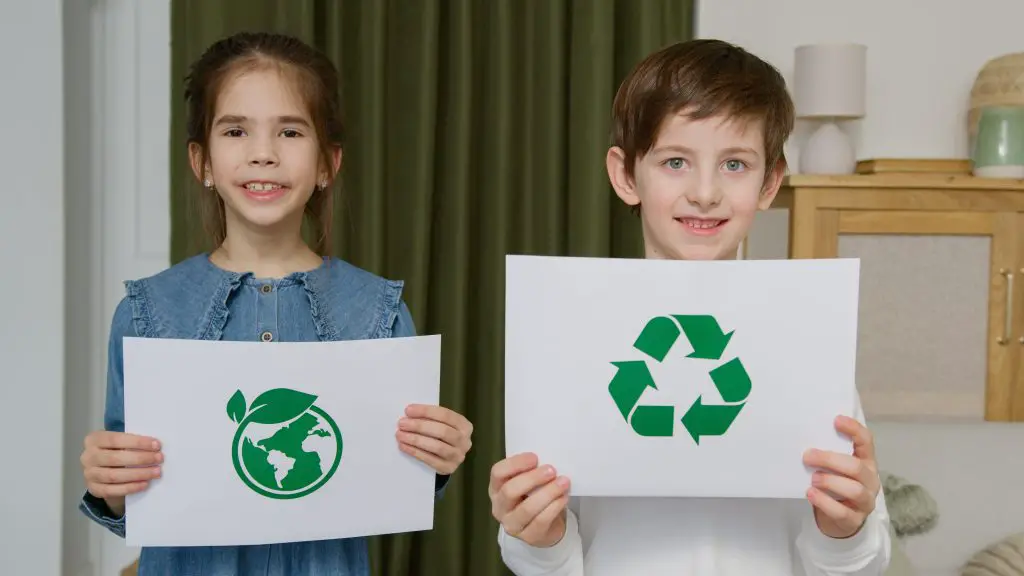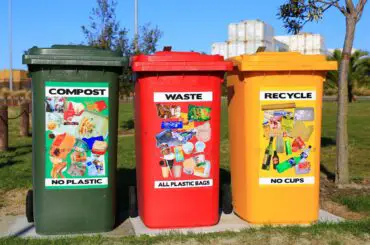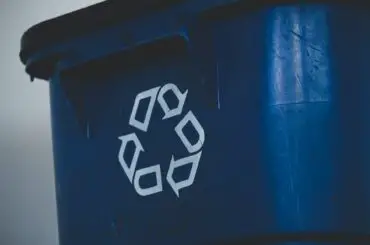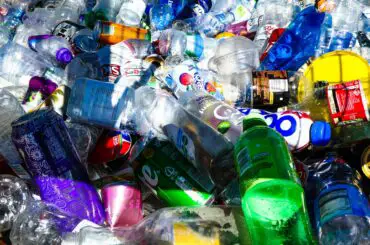The recycle symbol has become a ubiquitous icon in our modern world, representing a powerful message of environmental responsibility. You’ve likely encountered this symbol countless times, adorning product packaging and containers. Its presence serves as a constant reminder of the urgent need to address our planet’s environmental challenges. In this article, we will explore the significance and relevance of the recycle symbol, unraveling its role in promoting sustainable practices and fostering a greener future for generations to come.
The recycle symbol stands as a visual testament to the interconnectedness between our daily choices and the health of our environment. It captures the essence of a global movement striving to conserve resources, minimize waste, and create a sustainable future. As we delve into the meaning and purpose behind this iconic symbol, we will discover how it goes beyond a mere image, carrying with it a call to action and a powerful message of environmental stewardship. Join us as we unravel the layers of the recycle symbol, unveiling its role in shaping our planet’s future and inspiring positive change.
Contents
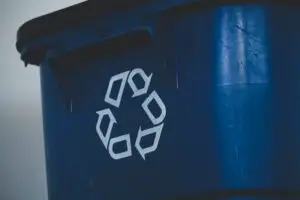 Meaning and Design of the Recycle Symbol
Meaning and Design of the Recycle Symbol
The recycle symbol also referred to as the universal recycling symbol or the Möbius loop, embodies a profound message of sustainability and responsible resource management. Understanding the symbol’s design and elements provides insights into its purpose and reinforces its significance.
The recycle symbol, recognized globally, consists of three arrows that form a continuous loop, often depicted in a clockwise direction. This looping configuration represents an endless cycle, symbolizing the concept of “reduce, reuse, recycle.” The arrows themselves are commonly depicted as triangular, with each arrowhead pointing toward the center of the symbol.
The symbol’s design signifies the interconnectedness of the three essential steps in sustainable waste management. The first arrow represents the crucial step in reducing consumption and waste generation. It urges us to be mindful of our choices and make efforts to minimize the amount of waste we create.
The second arrow highlights the significance of reusing items whenever possible. By encouraging the reuse of products and materials, we can extend their lifespan and reduce the need for new resources. This practice not only conserves valuable raw materials but also decreases the overall waste footprint.
Finally, the third arrow emphasizes the importance of recycling. It serves as a reminder to properly dispose of items that can be recycled and to support the recycling infrastructure. Recycling allows materials to be transformed into new products, diverting them from landfills and reducing the demand for virgin resources.
The clockwise direction of the arrows in the recycle symbol is not arbitrary. It is intentionally designed to evoke a sense of progress and forward motion. The continuous loop signifies an ongoing commitment to sustainable practices and the need for a perpetual cycle of reducing, reusing, and recycling.
Alternative names such as the universal recycling symbol or Möbius loop are often used interchangeably with the term “recycle symbol.” These names reflect the symbol’s universal recognition and its association with promoting recycling efforts on a global scale.
History and Purpose
The history of the recycle symbol traces back to the early 1970s, when there was a growing awareness of the environmental impact of waste and the need for recycling. It was during this time that the Container Corporation of America, a leading packaging and container company, sponsored a contest to design a symbol that could represent recycling and its associated principles.
The contest aimed to find a visual icon that would communicate the message of environmental responsibility and promote recycling practices. Among the submissions received, it was a college student named Gary Anderson who emerged as the designer of the winning symbol.
Gary Anderson’s creation captured the essence of the recycling process and its role in sustainable resource management. His design featured three arrows forming a continuous loop, representing the cyclical nature of recycling. The symbol encapsulated the idea of “reduce, reuse, recycle,” urging individuals and businesses to adopt a more environmentally conscious approach.
The contest, sponsored by the Container Corporation of America, served as a platform to highlight the importance of recycling and encourage innovative design solutions to communicate this message effectively. Gary Anderson’s contribution marked a pivotal moment, as his design became an iconic symbol recognized worldwide.
The purpose of the recycle symbol extends beyond its visual appeal. It was intended to inspire individuals, industries, and governments to take proactive steps toward waste reduction and resource conservation. By placing the symbol on products, packaging, and recycling bins, its aim was to raise awareness, encourage responsible consumption, and promote the adoption of recycling practices.
The recycle symbol serves as a unifying symbol for the global recycling movement. It transcends language barriers and cultural differences, providing a universal visual language to communicate the importance of recycling and sustainability. It represents a shared commitment to safeguarding our planet’s resources and fostering a more environmentally conscious society.
Today, the recycle symbol continues to be widely used, reminding us of the role we play as individuals in preserving the environment. It serves as a powerful reminder to consider the environmental impact of our choices and to embrace recycling as an essential component of a sustainable future. The enduring legacy of Gary Anderson’s design is a testament to the enduring importance of recycling and the ongoing efforts to promote a greener, more sustainable world.
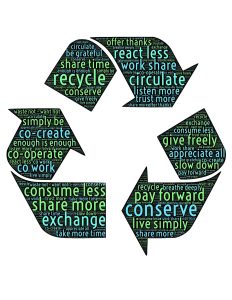 What is Recyclability?
What is Recyclability?
The recycle symbol plays a crucial role in conveying the potential recyclability of a product or its packaging. It serves as a visual indicator that the item has the potential to be recycled, encouraging individuals to make environmentally responsible choices.
The purpose of the recycle symbol is to raise awareness about the importance of recycling and promote the idea of a circular economy. It reminds us that materials can be given a new life through the recycling process, reducing the demand for virgin resources and minimizing waste.
However, it’s important to recognize that the recycle symbol has its limitations when it comes to providing specific recycling information. While the symbol signifies that an item can be recycled, it does not offer detailed guidance on how to recycle it or the specific recycling requirements.
Recycling processes vary depending on the material involved. Plastics, glass, paper, metals, and other materials all have distinct recycling methods and requirements. For instance, plastic bottles may need to be rinsed and their caps removed before recycling, while paper products should be clean and free of contaminants.
Therefore, it is crucial to understand that the recycle symbol does not guarantee that an item will be accepted for recycling in all locations or that it will be recycled as part of every recycling program. The actual recyclability of a product depends on various factors, such as local recycling infrastructure, market demand for recycled materials, and the specific guidelines set by recycling programs or facilities.
Material-specific recycling processes are essential for effective recycling. Different materials have unique properties and require specific treatment to be recycled efficiently. Understanding these processes is vital to ensure that items are properly sorted, prepared, and processed for recycling.
To ensure effective recycling, it is recommended to consult local recycling authorities or facilities for specific guidelines on what can be recycled in your area. They can provide information on material-specific recycling processes, local recycling capabilities, and any restrictions or recommendations.
Promoting Environmental Responsibility
The recycle symbol goes beyond being a mere symbol for recycling. It serves as a powerful tool to promote broader environmental responsibility and inspire sustainable practices. By embracing the principles of “reduce, reuse, recycle,” the symbol encourages individuals and communities to adopt mindful consumption habits and make conscious choices that minimize their environmental impact.
- Broadening the Symbol’s Message Beyond Recycling: The recycle symbol signifies a holistic approach to environmental responsibility. It reminds us that recycling alone is not enough to address the challenges of waste and resource depletion. It encourages us to broaden our focus and consider the entire lifecycle of products, from production to disposal. By embracing concepts such as eco-design, sustainable sourcing, and extended producer responsibility, we can reduce waste and environmental harm at every stage.
- Encouraging the Principles of “Reduce, Reuse, Recycle”: The recycle symbol serves as a visual reminder of the three interconnected principles: reduce, reuse, and recycle. It encourages us to minimize waste by reducing our consumption and making conscious choices about the products we purchase. It promotes the reuse of items whenever possible, extending their lifespan and reducing the need for new resources. Finally, it inspires us to recycle materials that have reached the end of their useful life, diverting them from landfills and supporting the creation of new products from recycled materials.
- Inspiring Sustainable Practices and Mindful Consumption: The presence of the recycle symbol on products and packaging acts as a catalyst for change, inspiring individuals to adopt sustainable practices in their everyday lives. It prompts us to consider the environmental impact of our choices, encouraging mindful consumption habits such as buying products with minimal packaging, opting for durable and reusable items, and seeking out eco-friendly alternatives. It promotes a shift in mindset, encouraging us to value quality over quantity, prioritize long-term sustainability over short-term convenience, and make choices that align with the principles of environmental responsibility.
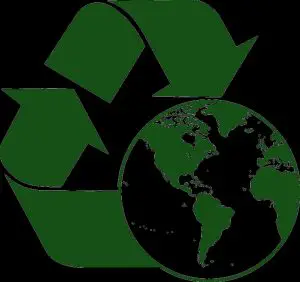 So, What is the recycle symbol?
So, What is the recycle symbol?
The recycle symbol holds significant meaning and purpose in our quest for environmental sustainability. It symbolizes our commitment to reducing waste, reusing resources, and recycling materials to create a more sustainable future. Throughout this article, we have explored the history, design, and message behind the recycle symbol, understanding its role in promoting responsible consumer actions and inspiring positive change.
The recycle symbol serves as a powerful reminder of our interconnectedness with the environment. It calls upon us to embrace responsible consumer actions that go beyond the symbol itself. By reducing our consumption, consciously reusing items, and diligently recycling materials, we contribute to the preservation of our planet’s precious resources and the reduction of waste.
However, the recycle symbol alone is not enough. It is a visual prompt that reminds us of our collective responsibility to make sustainable choices in our daily lives. It urges us to be mindful of our consumption patterns, seek out eco-friendly alternatives, and support initiatives that prioritize environmental preservation.
To foster a greener future, we must embody the principles encapsulated by the recycle symbol. It is through individual actions and collective efforts that we can bring about meaningful change. Let us educate ourselves and others about sustainable practices, advocate for improved recycling infrastructure, and actively participate in initiatives that promote a circular economy.
By embracing the recycle symbol’s message and integrating the principles of “reduce, reuse, recycle” into our lifestyles, we can create a positive impact. Together, we have the power to foster a greener future, one where resources are conserved, waste is minimized, and the health of our planet is safeguarded for generations to come.
So, let the recycle symbol be a constant reminder of our commitment to environmental stewardship, and let us take proactive steps towards a more sustainable and resilient world. With responsible consumer actions and a collective dedication to preserving our planet, we can shape a future where harmony between humanity and nature thrives.
Want to know what are the things that can be recycled? Read it here.

